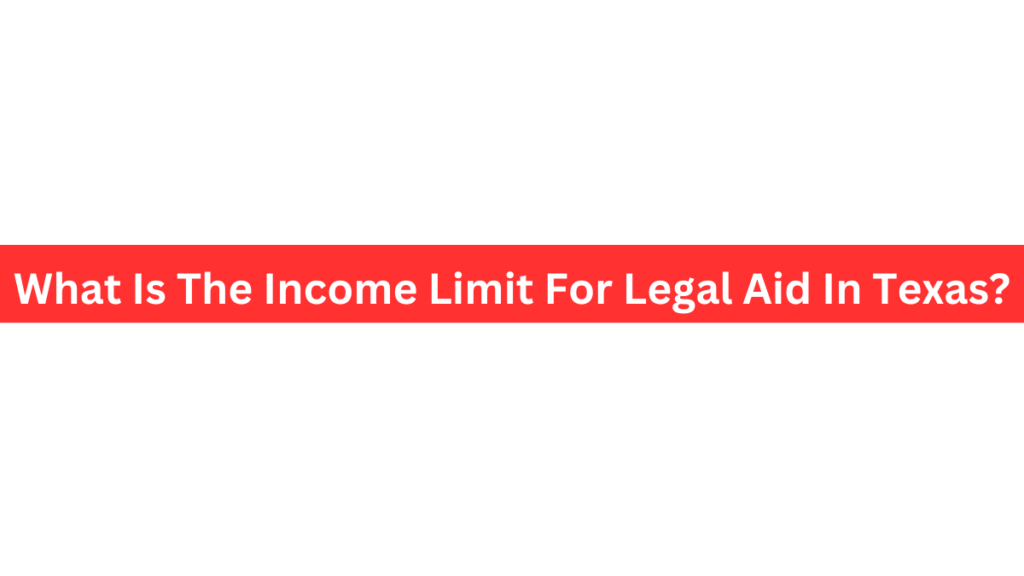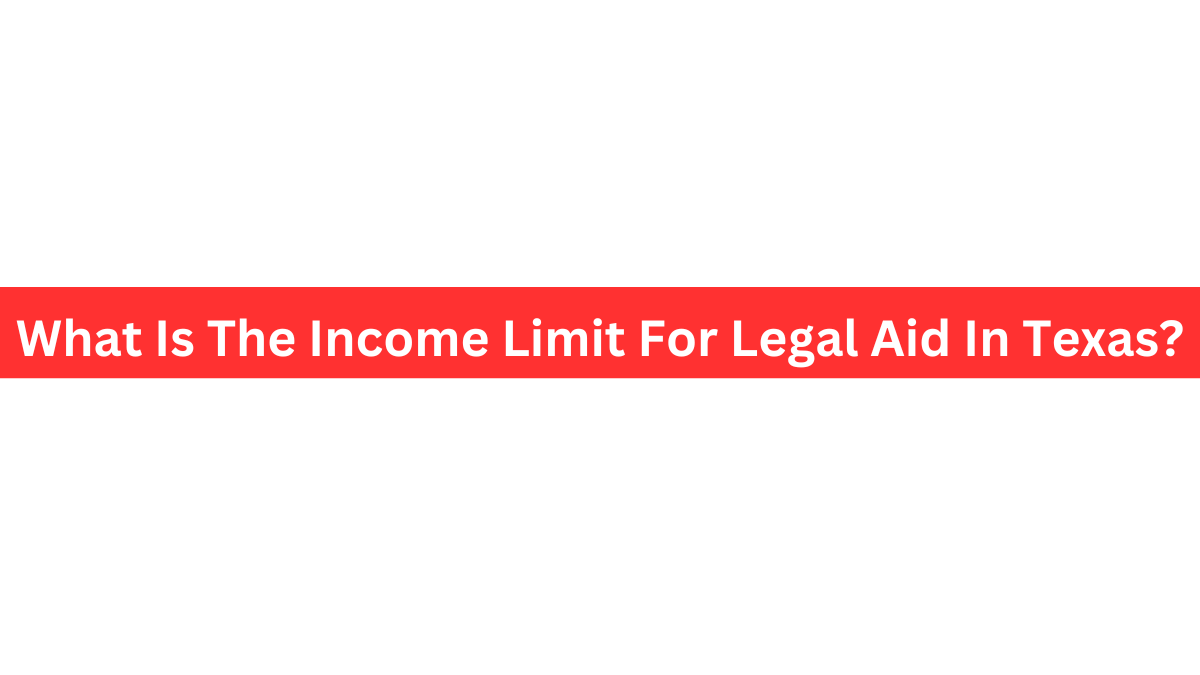You Are Know What Is The Income Limit For Legal Aid In Texas? Obtaining legal representation can be a significant hurdle, especially for low-income individuals and families in Texas. Fortunately, legal aid programs exist to bridge this gap and ensure access to justice for those who qualify. This article explores the income limits for legal aid in Texas, along with other essential factors influencing eligibility.

What Is The Income Limit For Legal Aid In Texas? – Understanding Income Limits
Texas legal aid programs primarily base eligibility on household income compared to the Federal Poverty Guidelines (FPG). The FPG establishes annual income thresholds for different household sizes considered low-income. Legal aid programs typically set their income limits at a percentage of the FPG.
Income Limits: A General Guideline
What Is The Income Limit For Legal Aid In Texas? – Texas legal aid programs typically base their eligibility requirements, in part, on household income. This benchmark is often tied to the Federal Poverty Guidelines (FPG), established annually by the U.S. Department of Health and Human Services. The FPG determines the income level for which various government assistance programs become available.
Financial Eligibility
- Income: To qualify based on income, your household income must be at or below 125% of the Federal Poverty Guidelines. In some cases, with income between 125% and 200% of the Poverty Guidelines, you may still be eligible depending on other economic factors.
- Assets: There are also limits on the amount of assets you can own to qualify. This typically applies to things like bank accounts, investments, and extra vehicles. The specific asset limits for your household will depend on the program you are applying for. However, generally, a household can have no more than $10,000 in non-exempt assets for one person, with an additional $5,000 allowed for each additional household member.
What Is The Income Limit For Legal Aid In Texas? – In simpler terms
- There are income limits to qualify for low-income housing. Ideally, your household income should be at or below 125% of the Federal Poverty Guidelines.
- There are also limits on the value of assets you can own. This typically includes things like bank accounts and extra vehicles.
125% of the FPG: The Common Threshold
| 125% of the federal poverty guideline | |||
| Family Size | Annual | Monthly | Weekly |
| 1 | $16,987.50 | $1,415.63 | $326.68 |
| 2 | $22,887.50 | $1,907.29 | $440.14 |
| 3 | $28,787.50 | $2,398.96 | $553.61 |
| 4 | $34,687.50 | $2,890.63 | $667.07 |
| 5 | $40,587.50 | $3,382.29 | $780.53 |
| 6 | $46,487.50 | $3,873.96 | $893.99 |
| 7 | $52,387.50 | $4,365.63 | $1,007.45 |
| 8 | $58,287.50 | $4,857.29 | $1,120.91 |
| Each Add’l | $5,900.00 | $491.67 | $113.46 |
Many legal aid organizations in Texas set the income limit at 125% of the FPG. This means a household must have an income that falls below 125% of the national poverty level to be considered eligible.
For instance, according to the 2024 FPG, the poverty line for a family of four is $37,500 annually. At 125% of the FPG, the qualifying income limit for such a family in Texas would be $46,875 per year (37,500 x 1.25).
200% of the federal poverty guideline
| 200% of the federal poverty guideline | |||
| Family Size | Annual | Monthly | Weekly |
| 1 | $27,180.00 | $2,265.00 | $522.69 |
| 2 | $36,620.00 | $3,051.67 | $704.23 |
| 3 | $46,060.00 | $3,838.33 | $885.77 |
| 4 | $55,500.00 | $4,625.00 | $1,067.31 |
| 5 | $64,940.00 | $5,411.67 | $1,248.85 |
| 6 | $74,380.00 | $6,198.33 | $1,430.38 |
| 7 | $83,820.00 | $6,985.00 | $1,611.92 |
| 8 | $93,260.00 | $7,771.67 | $1,793.46 |
| Each Add’l | $9,440.00 | $786.67 | $181.54 |
Income Limits Vary Based on Family Size
The FPG considers household size when determining poverty levels. So, the income limit for legal aid eligibility will also vary depending on the number of people in your household. Legal aid websites or organizations often provide charts outlining the income limits based on family size.
Beyond Income: Additional Eligibility Factors
While income is a crucial factor, it’s not the sole determinant for legal aid eligibility. Here are some other aspects that legal aid programs might consider:
- Type of Legal Issue: Legal aid programs often focus on specific areas of law, such as family law, housing issues, or consumer protection. Your legal concern must fall within the program’s practice areas to qualify.
- Residency: You may need to be a resident of a specific county or region served by the legal aid program.
- Asset Limits: Some programs might have limitations on the value of assets you own, excluding your primary residence.
Finding Out If You Qualify
The best way to determine your eligibility for legal aid in Texas is to contact a legal aid organization directly. Here are some resources to get you started:
- Texas Legal Help: This online resource provides a directory of legal aid programs across Texas. You can search based on your location and legal issue [Texas Law Help].
- Texas Access to Justice Foundation (TAJF): TAJF funds legal aid programs throughout the state. Their website offers information on eligibility requirements [Texas Access to Justice Foundation].
- Lone Star Legal Aid (LSLA): One of the largest legal aid providers in Texas, LSLA serves a vast region across the state. Their website offers details on eligibility and application procedures [Lone Star Legal Aid].
Conclusion
Now You Can Get All Information about What Is The Income Limit For Legal Aid In Texas? Legal aid programs play a vital role in ensuring access to justice for law-income Texans. By understanding the income limits and other eligibility factors, you can determine if you qualify for legal assistance and connect with the appropriate program to address your legal needs.
